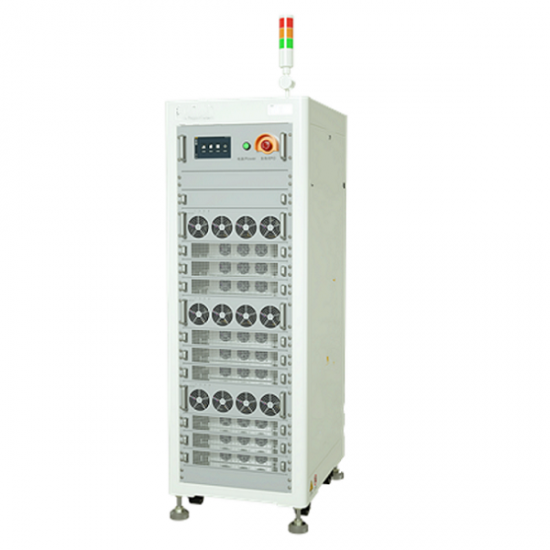Lith Corporation, founded in 1998 by a group of material science doctor from Tsinghua University, has now become the leading manufacturer of battery lab&production equipment. Lith Corporation have production factories in shenzhen and xiamen of China.This allows for the possibility of providing high quality and low-cost precision machines for lab&production equipment,including: roller press, film coater,mixer, high-temperature furnace, glove box,and complete set of equipment for research of rechargeable battery materials. Simple to operate, low cost and commitment to our customers is our priority.
What is an EV Car Battery Assembly Line?
An EV (Electric Vehicle) Car Battery Assembly Line refers to the automated or semiautomated system used to assemble lithiumion battery packs from individual battery cells and modules. Unlike the cell manufacturing line, which produces the raw electrochemical components (anodes, cathodes, separators), the assembly line focuses on integrating these components into modules and then assembling those modules into a complete, vehicleready battery pack.
This stage is critical for ensuring that the final battery pack meets the performance, safety, and durability requirements of modern electric vehicles (EVs). It includes:
Precise electrical and mechanical integration
Installation of cooling systems and BMS (Battery Management System)
Final testing and quality assurance
The battery pack is one of the most complex and expensive components in an EV, often accounting for 30–50% of the total vehicle cost. Therefore, the assembly process must be highly controlled and repeatable.
Key Components Assembled in an EV Battery Assembly Line
Before diving into the stages of the assembly line, here are the main components typically integrated:
1. Battery Cells – The basic energy storage units (cylindrical, pouch, or prismatic).
2. Busbars – Conductive connectors that link cells together.
3. Thermal Interface Material (TIM) – Ensures efficient heat transfer between cells and cooling plates.
4. Cooling System – Includes cooling plates, liquid coolant lines, or air ducts.
5. Battery Housing / Enclosure – The structural frame that holds everything together.
6. Battery Management System (BMS) – Monitors and controls cell voltages, temperatures, and overall pack health.
7. Highvoltage Cables and Connectors – Links the battery to the vehicle’s powertrain and electronics.
8. Sensors and Wiring Harnesses – For realtime monitoring and communication with the vehicle ECU.
Stages of an EV Battery Assembly Line
A typical EV battery assembly line consists of three core stages:
1. Cell Handling and Inspection
Before assembly begins, incoming battery cells are inspected and sorted to ensure uniformity and quality.
# Activities:
Incoming Quality Control: Voltage, internal resistance, and capacity checks
Sorting & Matching: Grouping similarperforming cells to prevent imbalance
Cleaning and Labeling: Preparing cells for module assembly
# Equipment Used:
Automated conveyors
Vision inspection systems
Electrical test benches
Data logging software for traceability
2. Module Assembly
In this stage, individual cells are grouped into modules, which serve as building blocks for the full battery pack.
# Activities:
Stacking and Fixturing: Arranging cells into precise configurations
Busbar Welding: Connecting cells electrically using laser welding
TIM Application: Applying thermal paste or pads between cells and cooling plates
Module Housing Installation: Enclosing the cell stack in protective trays or frames
# Equipment Used:
Robotic stacking arms
Laser welders with vision alignment
Dispensing systems for TIM
Fixtures and clamping tools
Realtime weld inspection systems
3. Pack Integration
Once modules are ready, they are combined into a complete battery pack along with other essential components.
# Activities:
Module Insertion: Placing modules into the battery enclosure
BMS Installation: Mounting and connecting the Battery Management System
Cooling System Installation: Installing liquid cooling plates or air ducts
Wiring and Harness Connection: Routing highvoltage cables and CAN communication lines
Final Sealing and Leak Testing: Especially important for liquidcooled packs
# Equipment Used:
Pack assembly robots
BMS installation stations
Cable routing and crimping tools
Torquecontrolled fastening systems
Leak testing chambers
EV Car Grading Machine
Final Testing and Validation
After assembly, the battery pack undergoes rigorous testing to ensure it meets all performance and safety standards.
# Tests Conducted:
Electrical Performance Testing: Voltage balance, insulation resistance
Functional Testing: Communication with vehicle ECU, BMS calibration
Thermal Performance Testing: Heat distribution and cooling efficiency
Safety Testing: Overcurrent, short circuit, and thermal runaway protection
Environmental Aging: Exposure to simulated realworld conditions (vibration, temperature extremes)
# Equipment Used:
Highvoltage test benches
Data acquisition systems
Vibration and environmental chambers
Functional testers with CAN interface
Supporting Systems in an EV Battery Assembly Line
To maintain highquality output and operational efficiency, several supporting systems are integrated throughout the production process.
1. MES (Manufacturing Execution System)
Tracks each step of the assembly process
Ensures full traceability from cell to final pack
Integrates with ERP systems for inventory and scheduling
2. Clean Room and Dry Room Environments
Prevents contamination during sensitive assembly steps
Maintains particulatefree and lowhumidity environments
3. Fire Suppression and Safety Systems
Critical due to the flammable nature of lithiumion batteries
Includes gas suppression systems, fire detection sensors, and emergency shutdown protocols
4. Automated Guided Vehicles (AGVs)
Transport materials and subassemblies between workstations
Reduces manual labor and improves workflow efficiency
Automation Levels in EV Battery Assembly Lines
Depending on the scale and investment level, automation can vary:
1. Manual Assembly
Suitable for R&D or smallscale production
Laborintensive, limited repeatability
2. SemiAutomatic Assembly
Combines automated key steps (welding, testing) with manual handling
Offers flexibility and costefficiency
Ideal for midvolume production or custom applications
3. Fully Automatic Assembly
Highspeed, robotdriven systems with AI vision and realtime data tracking
Found in largescale EV manufacturing plants (e.g., Tesla Gigafactories, CATL, BYD)
High initial investment but offers excellent repeatability, traceability, and throughput
Design Considerations for an EV Battery Assembly Line
When setting up or optimizing your EV battery assembly line, consider the following factors:
Cell Type and Size – cylindrical, pouch, or prismatic; each has unique handling needs
Production Volume – match layout and throughput to daily/hourly targets
Vehicle Platform Compatibility – ensure the line supports current and future models
Level of Automation Required – manual, semiauto, or full auto?
Space and Layout Planning – optimize material flow and minimize bottlenecks
Integration with BMS and Cooling Systems – seamless communication and fit
Traceability and MES Integration – essential for quality control and recalls
Safety Features – fire suppression, emergency stops, explosionproof design
Benefits of a Modern EV Battery Assembly Line
Enables highvolume, repeatable production of safe and reliable battery packs
Supports both lowvolume customization and mass production
Reduces failure risks through automated quality checks
Improves product consistency and reduces labor costs
Facilitates realtime monitoring and datadriven optimization
Complies with global automotive safety standards such as ISO 26262, IEC 62660, UN38.3
Leading Companies Providing EV Battery Assembly Line Equipment
Several global companies offer turnkey solutions or key components for EV battery assembly lines:
KUKA Systems – Advanced robotic automation for battery assembly
B&R Industrial Automation (ABB) – Integrated automation platforms
Gree EnergyTech – Complete module and pack line solutions
Hanson Robotics – Smart battery manufacturing systems
Hyundai WIA – Specialized automotive battery equipment
Trumpf, Coherent, IPG Photonics – Laser welding and sealing equipment
CATL, BYD, Panasonic, LG Energy Solution – Inhouse developed production systems
Need Help Setting Up or Optimizing Your EV Battery Assembly Line?
If you're looking to design, build, or optimize your EV battery assembly line, I can help you with:
Process Flow Design – From cell handling to final pack testing
Factory Layout Planning – Space optimization and workflow analysis
Automation Strategy – Selecting the right level of automation for your needs
Equipment Selection – Recommending bestinclass machinery and suppliers
Cost Estimation – Budget planning based on production volume and complexity
Customization Support – Adapting the line to your specific vehicle platform
All you need to do is provide the following information:
Cell type and dimensions (cylindrical, pouch, prismatic)
Desired production volume per day/month
Level of automation required (manual/semiauto/fullauto)
Target vehicle types (passenger cars, buses, trucks, etc.)
Current factory space and infrastructure details




 Online service
Online service
